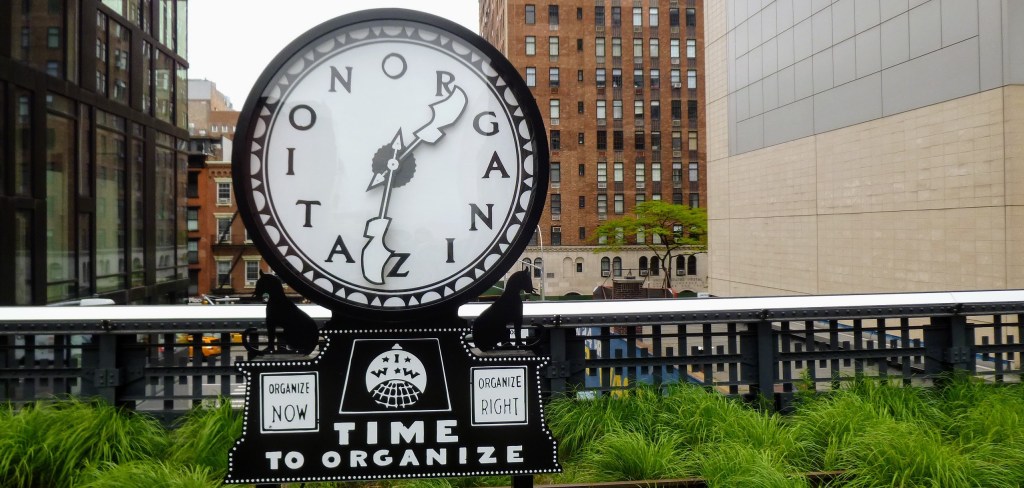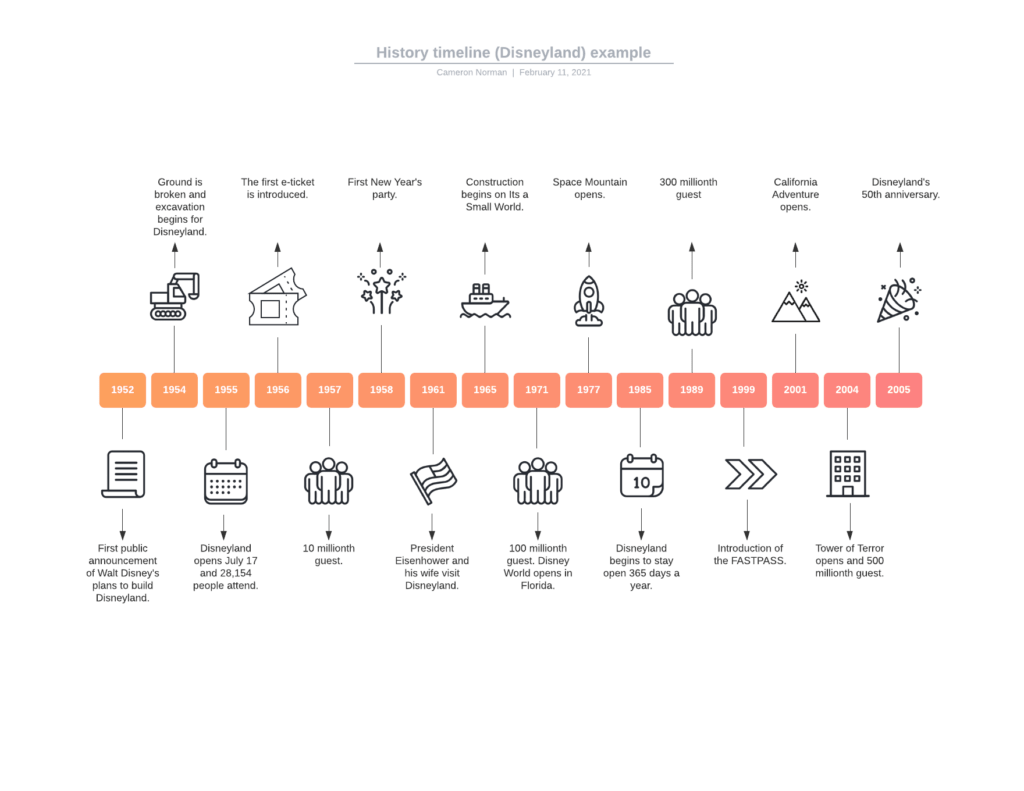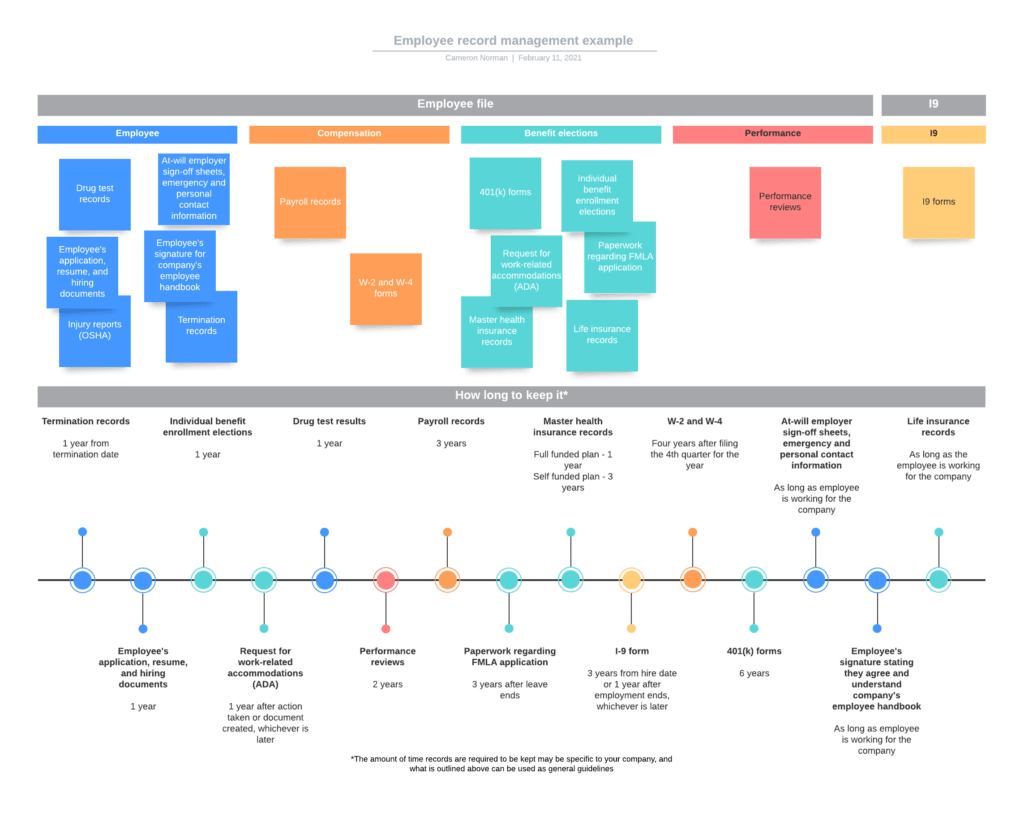This is an Eval Central archive copy, find the original at cense.ca.

Just as parents will use pencil notches in a wall to track the height of their children as a developmental marker, so too can innovators and evaluators use timelines to help gather and track the development of programs and projects over time.
A timeline is a simple linear visual that gathers activities together that uses time as the variable of distinction.
What makes a timeline useful is that it provides a visual display of temporal relationships between events, activities and outcomes. It makes explicit what we might have in our heads, but are also prone to confusing and forgetting over time.
When to Use Timelines
Timelines are useful in a variety of situations:
- Projects with activities that can be organized into a sequence (whether planned or not). They are less useful for projects where there are many activities happening simultaneously.
- Projects with a long time horizon.
- Projects operating in an environment with many different levels of activities and influences. For example, when there are external factors like policy decisions that have discrete times attached to them and can influence a project’s course, this is a good use of a timeline.
- Projects that have a story to tell that involves a beginning, middle, and end.
A timeline can help provide anchors between project activities and events — whether those are policy-related, tied to human (or other) resource use, environmental disruptions, seasons, or cycles. They can help provide hypotheses between causes and consequences or explain mediators.
For example, one non-profit project we worked on had a planned roll-out that was moving along well until their funder abruptly cancelled the program that they relied on. This meant that the six-months after that announcement involved finding new sources of revenue, reductions in staffing, and changes in some activities, yet also persistence in trying to adapt to the situation and still execute the original plan. By showing the data on a timeline it helped explain what happened to project activities, outputs, and outcomes within a certain time period and how that related to the overall project plan.
Examples
Below is an example of a timeline that illustrates distinctive markers along the route. These are clearly defined events that took place on specific dates. The selection of events includes those deemed to be meaningful and significant to the project.

What makes a timeline a powerful tool is that there are many different ways to illustrate events. The example above is a relatively straightforward set of data.
Below is another example that involves much more data and in different forms. This example creates a hybrid of timeline and categorization exercise.

Creating Timelines
There are many templates and tools that can be used to help develop visual graphics. The examples above are from Lucidchart, however, tools like Miro, Mural, SmartDraw, PowerPoint, Google Draw, and many others have templates that can be modified to create useful timelines. These are all simple tools that can be manipulated easily so you’re able to build them as you go.
If you are looking to develop more sophisticated models, we suggest employing a visual communicator or graphic designer to take advantage of the many ways you can represent temporal data.
The result is something that is engaging and can easily be discussed or presented to diverse stakeholders involved in a project who might be able to validate, contribute to, or constructively challenge the arrangements. We find this to be a powerful way to organize our findings, refresh our memories, and recognize all of the activities that go into a project.
Documenting Innovation Development
Lastly, if you are developing an innovation where there is no clear ‘end’ known at the beginning, timelines are useful in telling the story of the project and documenting the different pivots, changes, adaptations, and their consequences. A timeline can be a powerful asset to Developmental Evaluation and a complement to the Living History Method that we often employ in those kinds of evaluations.
A timeline can honour all the work you put into coming up with your final product and can be an engaging way to get people involved in celebrating, documenting, and tracking what you do and create.
We use these all the time and can help you track and evaluate your project. Contact us and let’s talk about timelines, innovation and impact.